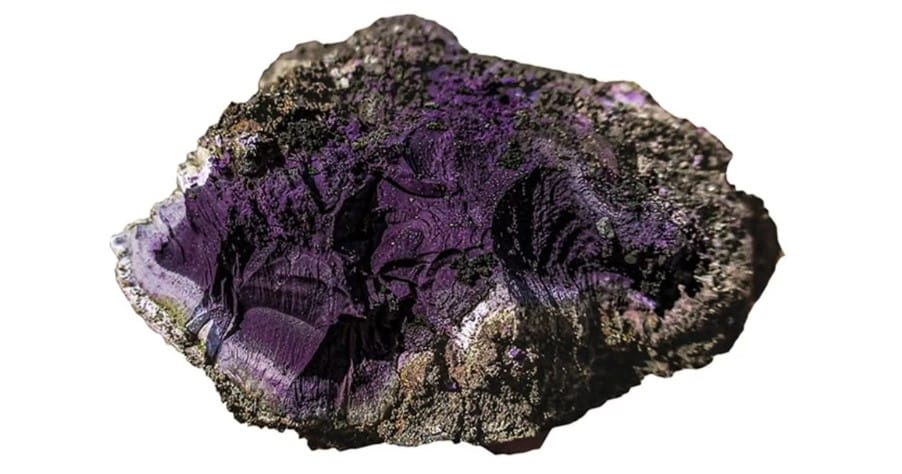
In a quiet corner of the United Kingdom, hidden within the historic confines of the Carlisle Cricket Club, a remarkable discovery has revitalized our comprehension of the Roman Empire’s luxurious past. During an excavation at a 1,700-year-old Roman bathhouse, a team of archaeologists and enthusiastic volunteers stumbled upon a curious and bright purple lump hidden in an ancient drain. This mysterious find, initially puzzling, was soon identified as an incredibly rare artifact from a distant era.
The intriguing object was revealed to be a lump of the legendary Tyrian purple dye, revered in antiquity as imperial purple. Esteemed for its deep hue and the complexity of its production, Tyrian purple has long captivated historians and scholars of the Roman Empire. The dye was so precious that it was once described as “worth more than gold,” reserved solely for the most influential figures in society to color their garments.
The analysis and confirmation of the purple dye were performed by top experts in the field, who verified the substance’s rarity and importance. Tyrian purple was historically derived from the secretions of specific sea snail species, with tens of thousands of these mollusks needed to produce just a single gram of dye. This labor-intensive and expensive process meant that the dye was almost exclusively reserved for society’s elite, including emperors and dignitaries, symbolizing wealth and status.
Frank Giecco, the principal archaeologist on the project from Wardell Armstrong, the firm managing the excavation, shared his enthusiasm about the find. “For thousands of years, Tyrian Purple was the world’s most sought-after and expensive color. The discovery of this pigment, possibly the only example of a solid sample of unused paint pigment anywhere in the Roman Empire, offers an unprecedented view into the daily life and luxury of the Roman elite,” stated Giecco.
This extraordinary find at the Carlisle site is not only the only known example of Tyrian purple in Northern Europe but may also be one of the few unaltered samples from the entire Roman world. The presence of this dye in such a remote outpost of the Roman Empire highlights the vast extent and impact of Rome at the zenith of its power and elucidates the complexities of ancient trade routes and the luxuries transported across these networks.
The site continues to be a focal point for archaeological insights, shedding light on Roman architecture, society, and the daily lives of its inhabitants. The ongoing excavations are expected to broaden our understanding of the Roman presence in Britain and the cultural and economic exchanges that took place during this captivating period of history.
As we explore deeper into historical layers, each artifact like this rare lump of Tyrian purple dye enriches our understanding of the Roman Empire. These discoveries are invaluable for historians, offering concrete links to the past that contribute to a fuller portrayal of Roman society, its priorities, luxuries, and expansive influence. For students and scholars, each discovery provides new material for study and discussion, presenting fresh perspectives and insights into one of history’s most influential civilizations.
In a broader sense, such discoveries underscore the lasting legacy of the Roman Empire and its ongoing relevance in contemporary studies of history, culture, and art. The narrative of Tyrian purple, from its creation to its symbolic importance, reveals numerous avenues for exploration into ancient technologies, economies, and social structures.
As excavations continue, both the academic community and history enthusiasts eagerly anticipate new revelations about the past glories of the Roman Empire and its enduring impact on the modern world. This discovery at Carlisle not only highlights the achievements of ancient Roman society but also promotes a deeper appreciation and understanding of our shared cultural heritage.
